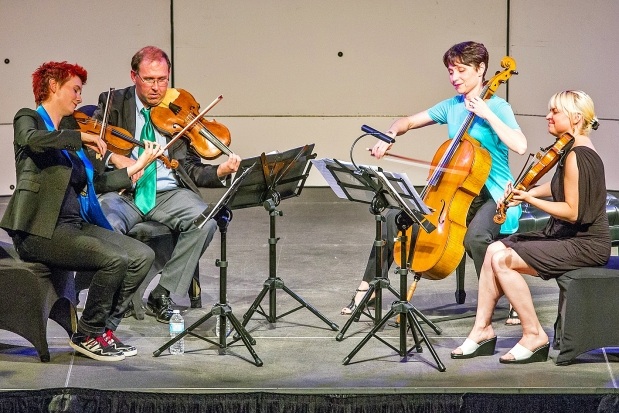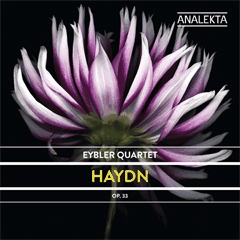
Some composers are closer to the hearts of performers than musicians. Joseph Haydn (1732-1809) is a prime example. Maybe it’s because the father of the string quartet and piano sonata is treated reverentially by those who appreciate his craft. But there’s room for fun-and-games, as well, as shows Toronto’s Eybler Quartet in their latest album.
- Classical Music 101: What Does A Conductor Do? - June 17, 2019
- Classical Music 101 | What Does Period Instrument Mean? - May 6, 2019
- CLASSICAL MUSIC 101 | What Does It Mean To Be In Tune? - April 23, 2019
 Haydn’s six, great Op. 33 string quartets have rarely sounded as light and lively as they do at the hands of these period-instrument masters, all of which are either Tafelmusik Baroque Orchestra regulars or frequent guests.
Haydn’s six, great Op. 33 string quartets have rarely sounded as light and lively as they do at the hands of these period-instrument masters, all of which are either Tafelmusik Baroque Orchestra regulars or frequent guests.
The 2-CD set has just been released by Analekta, and gets its official launch at a Heliconian Hall concert on Nov. 1.
More famous than Mozart in his day, Haydn had a steady job working for Price Nicolaus Esterhazy but was also given opportunities to travel as well as get his music published. The composer took advantage of these freedoms to write these quartets for talented amateurs. Back in the time, there were no professional chamber ensembles; this was music for the personal entertainment of aristocrats and families of means and education.
The music that entertained them was not always easy to play — and these six quartets present all sorts of little challenges to the most able performer. But they, like Haydn’s piano sonatas and symphonies, are filled with compositional cleverness wrapped in what would become the standard early-19th century four-movement sonata form of fast-slow-scherzo-fast.
Haydn alternates the placement of the scherzo and slow movements in these six quartets written in 1781. He plays with keys and, most importantly, he toys with the our expectations of what is about to happen next.
The Eyblers’ period instruments bring a naturally light and warm character to the ensemble. They also bring along a natural loss in the homogeneiety of the sound; the shape of a note can’t always be formed as smoothly as on a modern instrument.
The result is music filled with vibrant textures and exposed edges — without ever losing its sense of friendly play. This is music that is alive, pulsing with rhythm and, best of all, brimming with a sense of true enjoyment of a spontaneous sound. You can practically hear these four players smiling as they toss musical motifs back and forth across their bows.
This is Haydn to make believers and lovers out of listeners.
Here are the Eyblers with the final movement of Op. 33, No. 1:
John Terauds
- Classical Music 101: What Does A Conductor Do? - June 17, 2019
- Classical Music 101 | What Does Period Instrument Mean? - May 6, 2019
- CLASSICAL MUSIC 101 | What Does It Mean To Be In Tune? - April 23, 2019



